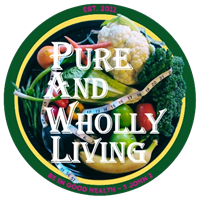Did you know? Peppers are technically fruit because they contain tiny seeds in the middle and grow from the flower of the pepper plant. However, in the casual home kitchen, these foods are considered vegetables, mostly due to their historical use in cuisine.
Peppers have a lot going for them. They’re low in calories and are loaded with good nutrition. All varieties are excellent sources of vitamins A and C, potassium, folic acid, and fiber. Plus, the spicy ones liven up bland food, making it more satisfying.
Peppers come in all sizes and colors. Some pack heat. Others are sweet. You can get them fresh, frozen, dried, or canned.
You’ve seen bell peppers — green, orange, yellow, and red — in the grocery store or in a salad bar. Red peppers pack the most nutrition and may have higher antioxidant and phytonutrient levels, because they’ve been on the vine longest and are riper.
Green peppers are harvested earlier, before they have a chance to turn yellow, orange, and then red. Compared to green bell peppers, the red ones have almost 11 times more beta-carotene and 1.5 times more vitamin C.
You can eat them raw or cooked. They are part of the nightshade family and are native to North and South America. They are in season in the United States during the summer and fall.
Like all vegetables, bell peppers naturally contain small amounts of sugars. Red peppers are sweeter, while green peppers can taste more bitter.
In this article, we will look at the health benefits of bell peppers, analyze any risks in eating bell peppers, and offer suggestions for how to use them in cooking.
Pepper Prep
Peppers are very versatile. You can add raw ones to everything from dips and salads to pasta dishes.
You can roast them or toss the red ones in a stir-fry for a hit of color, too.
When working with hot peppers, remember that they can burn your skin and eyes. Wear rubber gloves while you’re handling them, keep your hands away from your face, and wash your hands as soon as you’re done. Keep a glass of whole or low-fat milk nearby, too. Capsaicin won’t dissolve in water. You need some fat to neutralize it.
Unlike the largely unjustified fear of nightshades, concern over pesticides in peppers is warranted. Both bell and hot peppers are on the Environmental Working Group’s “Dirty Dozen,” which means they have more pesticides than most other produce tested. In 2022, they were the 7th most contaminated plant food.
You may therefore want to buy organic peppers, or even better, grow your own. If you have access only to conventionally grown peppers, you can remove most of the pesticide residues by washing them properly in salt water, then rinsing thoroughly.
The Bottom Line
Peppers are beloved worldwide for their remarkable nutritional and medicinal benefits, as well as their varied — and often intense — flavor profiles, colors, and heat levels. Whether sweet or hot, peppers have high amounts of vitamin C and other antioxidants that stave off oxidative stress in the body and help to prevent and manage chronic disease.
You can use sweet and hot peppers in a variety of savory and spicy dishes to add color and heat. And while there are some considerations when choosing and eating peppers (especially hot peppers), they are safe to eat for most people. If possible, though, choose organic, wash them well, or grow your own, to steer clear of pesticide exposure.
In conclusion, Popular Peppers Please your Palate by Providing Pizzazz to your Plate. And they’re really good for you, too!
Adapted from WebMD, MedicalNewsToday, Food Revolution Network

